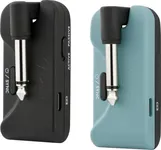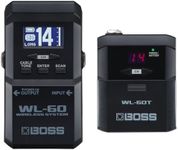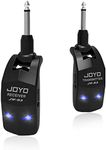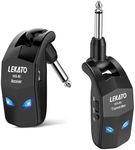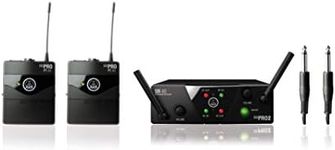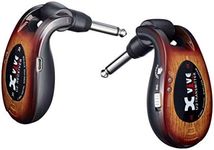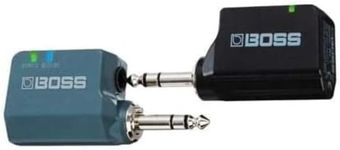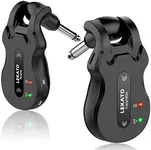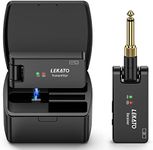Buying Guide for the Best Wireless Guitar Systems
Choosing the right wireless guitar system can greatly enhance your performance by providing freedom of movement on stage without the hassle of cables. When selecting a wireless system, it's important to consider factors such as sound quality, range, battery life, and ease of use. Understanding these key specifications will help you find a system that meets your needs and complements your playing style.Frequency RangeThe frequency range of a wireless guitar system determines the range of sound frequencies it can transmit. This is important because it affects the clarity and quality of the sound. Systems with a wider frequency range can capture more nuances of your guitar's tone. Typically, a range of 20Hz to 20kHz is ideal for most guitarists, as it covers the full spectrum of human hearing. If you play a bass guitar, ensure the system can handle lower frequencies effectively.
Operating RangeThe operating range indicates how far you can move from the receiver while maintaining a clear signal. This is crucial for live performances where you might want to move around the stage. Short-range systems (up to 50 feet) are suitable for small venues or practice, while medium-range systems (50-100 feet) are good for larger stages. Long-range systems (over 100 feet) are ideal for large venues or outdoor performances. Consider the size of the venues you typically play in when choosing the operating range.
Battery LifeBattery life refers to how long the transmitter and receiver can operate before needing a recharge or battery replacement. This is important for ensuring uninterrupted performances. Short battery life (up to 4 hours) might be sufficient for practice sessions, while medium (4-8 hours) and long battery life (over 8 hours) are better for gigs and tours. Consider how long your performances typically last and whether you have easy access to charging facilities.
LatencyLatency is the delay between when you play a note and when it is heard through the speakers. Low latency is crucial for maintaining timing and feel, especially in live performances. Latency under 5 milliseconds is generally imperceptible and ideal for most musicians. If you are sensitive to timing or play fast-paced music, prioritize systems with the lowest latency possible.
Number of ChannelsThe number of channels refers to how many different frequencies the system can operate on. This is important for avoiding interference from other wireless devices. Systems with more channels offer greater flexibility in crowded environments, such as festivals or multi-band events. If you often play in such settings, choose a system with multiple channels to ensure a clear signal.
Build QualityBuild quality refers to the durability and robustness of the wireless system. This is important for ensuring the system can withstand the rigors of frequent use and transportation. Systems with metal housings and sturdy connectors are generally more durable. If you frequently travel or perform live, prioritize systems with high build quality to ensure longevity.
